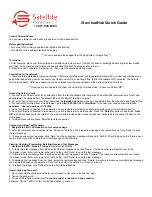
Chapter 1 Overview
l
Equipment alarm: related with equipment hardware faults.
l
Communication alarm:
related with information transmission faults (ITU-T
Recommendation X.733).
l
Processing error alarm: related with software or processing faults (defined in ITU-T
Recommendation X.733).
l
Environmental alarm: related with the environment where the equipment is located
(defined in ITU-T Recommendation X.733).
l
QoS alarm: related with equipment operation performance or indexes.
1.3.2 Possible Causes
Probable alarm causes are provided to help users troubleshoot, find preventive measures,
and restore the system to normal state in a timely manner.
1.3.3 Effect on the System
The consequence of each alarm and the impact on the system and services are provided.
1.3.4 Handling Procedure
Troubleshooting steps and suggestions are provided.
During the alarm handling process, the following tips needs your attention:
l
After recording the fault information, O&M personnel needs to handle the fault step
by step as suggested. If there is no otherwise specified and the fault is solved (that
is, alarm is cleared), the alarm handling process ends. If the fault persists, go to the
next step.
l
If fault cannot be removed, contact the local ZTE office.
1.4 Notification
1.4.1 Notification Property
Notification Code
A notification code uniquely identifies a notification.
Description
Notification description summarizes the event information, such as the cause and
phenomenon.
Severity
No notification severity is available.
1-3
SJ-20111008094748-008|2012–05–30 (R1.1)
ZTE Proprietary and Confidential














































